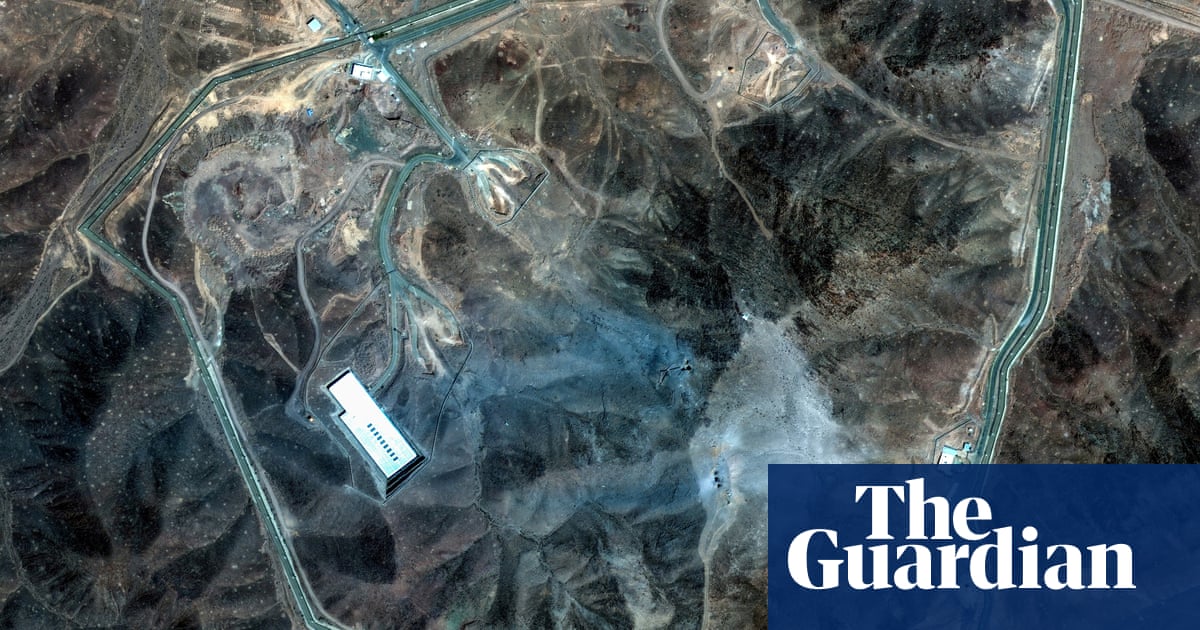Donald Trump has doubled down on claims “monumental damage” had been done to Iran’s nuclear sites, as the head of the UN’s nuclear agency said that while he anticipated “very significant damage” at the underground Fordow site, the agency had not been able to assess it.
Rafael Grossi, the head of the International Atomic Energy Agency, confirmed thatIranhad told the agency it had planned to take “special measures” to protect equipment and nuclear materials on 13 June.
Trump, who has a reputation for hyperbole, again stated that the sites had been “obliterated” by this weekend’s US bombings, in contrast with the more cautious language from the Pentagon and Israeli officials.
“Monumental Damage was done to all Nuclear sites in Iran, as shown by satellite images,” he said in a social media post. “Obliteration is an accurate term!” Pentagon officials have characterised the damage to the sites – at Fordow, Natanz and Isfahan – as “severe”.
Assessing the extent of the damage has been complicated by the fact that the US, Israel and the IAEA only have access to surface satellite imagery of the sites and reporting from Iran’s nuclear agency on any contamination.
Satellite imagery of Fordow taken in the days before the US attack showed an unusual volume of truck traffic. The images appeared to confirm that Iranian authorities had preemptively removed some material from the site, possibly including its uranium stockpile – or parts of it.
On Monday, Israeli jets struck Fordow in order to obstruct its access routes, the IDF said.
According to briefings from unnamed US and Israeli officials to American and Israeli media, Fordow had been heavily damaged but not destroyed. A senior US officialtold the New York Timesthe site had been taken “off the table” but that even 12 bunker-busting bombs could not destroy it.
Speaking in Vienna, Grossi said that given the “explosive payload utilised and the extreme vibration sensitive nature of centrifuges, very significant damage is expected to have occurred.”
He added, however, that “at this time, no one, including the IAEA, is in a position to have fully assessed the underground damage.” Iran’s foreign minister, Abbas Araghchi, had earlier said Tehran was still “calculating the damage”.
Grossi also called for agency inspectors to be allowed to return to Iran’s nuclear sites in an effort to “account for” Iran’s highly enriched uranium stockpiles and a “return to the negotiating table”.
Whether or not Iran had managed to remove technology and uranium from the attacked sites is likely to be a key question in the coming days and weeks.
“We are going to work in the coming weeks to ensure that we do something with that fuel and that’s one of the things that we’re going to have conversations with the Iranians about,” the US vice-president, JD Vance, told ABC’s This Week on Sunday, referring to the stockpile of uranium theoretically sufficient to make nine or 10 atomic weapons.
Satellite images released by several imaging companies in the immediate aftermath of the US strikes suggested changes to the above ground topography of the Fordow site, which is buried beneath layers of sedimentary rock in the Zagros mountains.
Other images showed what appeared to be two distinct clusters of holes in a ridge at the site, caused by the entry of the dozen bunker-busting Massive Ordinance Penetrators dropped by US B2 Spirit stealth bombers.
According to Joseph Rodgers, deputy director and fellow at the Center for Strategic and International Studies’ Project on Nuclear Issues, the US bunker busters appeared to have targeted ventilation shafts at the Fordow facility.
“The reason that you’d want to target a ventilation shaft is that it’s a more direct route to the core components of the underground facility,” Rodgers told Wired magazine.
Among those so far sceptical about the impact of the US strikes was Jeffrey Lewis, a professor at the Middlebury Institute of International Studies at Monterey, who tracks Iran’s nuclear facilities.
“At the end of the day there are some really important things that haven’t been hit. If this ends here, it’s a really incomplete strike,” Lewis told NPR, echoing other experts who pointed to Iran’s continued retention of enriched uranium as the key issue.
In a lengthy thread on social media, Lewis expanded his point: “This means Iran has retained 400kg [of 60% highly enriched uranium], the ability to manufacture centrifuges, and one, possibly two underground enrichment sites.
“That is enough, if enriched further, for nine nuclear weapons, according to an IAEA’s calculation, although Iran insists it does not seek nuclear weapons.”
“That is also to say nothing of possible secret sites, which opponents of the JCPOA [the Iran nuclear deal Trump pulled out of] used to invoke all the freaking time,” Lewis said.
“If the strike leaves the current regime, or something very much like it, in power with a nuclear option then it will have been a strategic failure. What does it say when two of the most amazing military operations in modern memory are still unable to fully eliminate Iran’s nuclear programme? I think that’s proof that this is tactical brilliance […] may be in service of a foolhardy strategy.”
